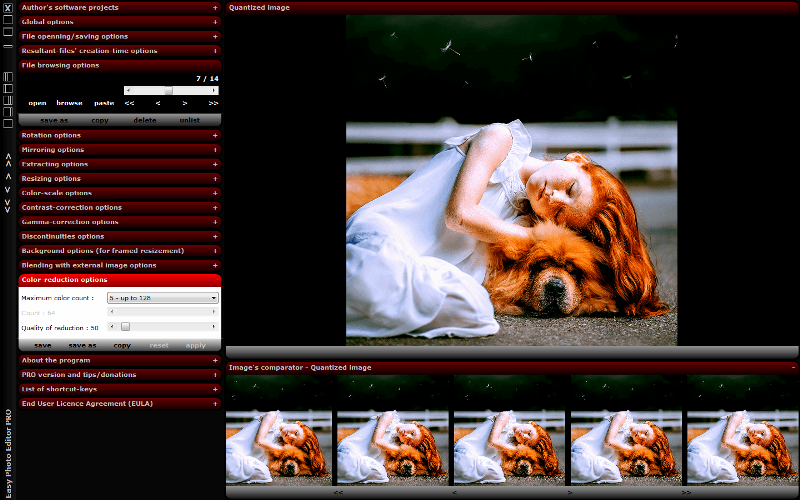Easily converts dull photos into good ones - the ideal for amateur photographers. There are several available graphical filters, which use follows a sequential path - this meaning that there is already a pre-selected order for their use. Sooe of the available graphical filters are: resizement, rotation, mirroring, extraction, contrast correction, gamma correction, quantization, etc. When creating web pages, the quantization (color reduction) filter is very useful, as it reduces (quantizes) the color scale of an image in a professional way, maintaining the image's quality, while greatly reducing the size of the resultant file (usually, for a normal photo, reducing its color scale to 512 colors is unnoticed by the user, but the file size gets really smaller). The program has been compiled in such a way that it adapts to the in-use cpu. Thus, it can be run on any x86 cpu as old as the Pentium one. There are several versions of the program available, so that you will find one that meets your needs and targets your OS, which can be any Windows OS from Windows NT4 till Windows 10. The program is portable - thus, it is not installed on the pc (this means that it does not meddle with its configurations) and can be run from any folder where you have executing privileges - thus, it (usually) can be even run from a pen drive (if you have executing privileges on it).

